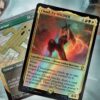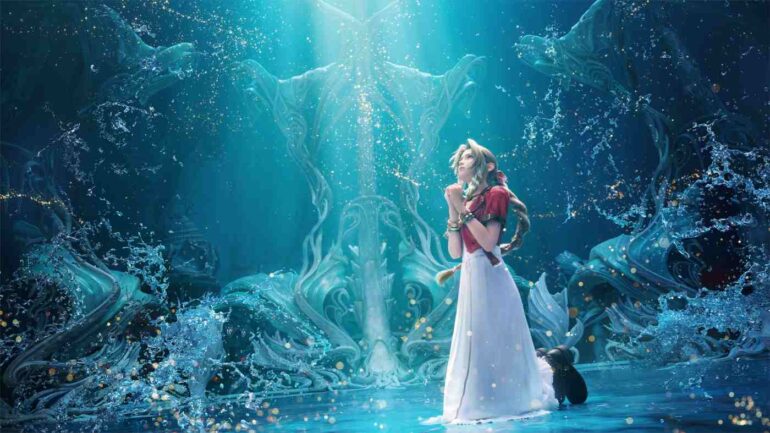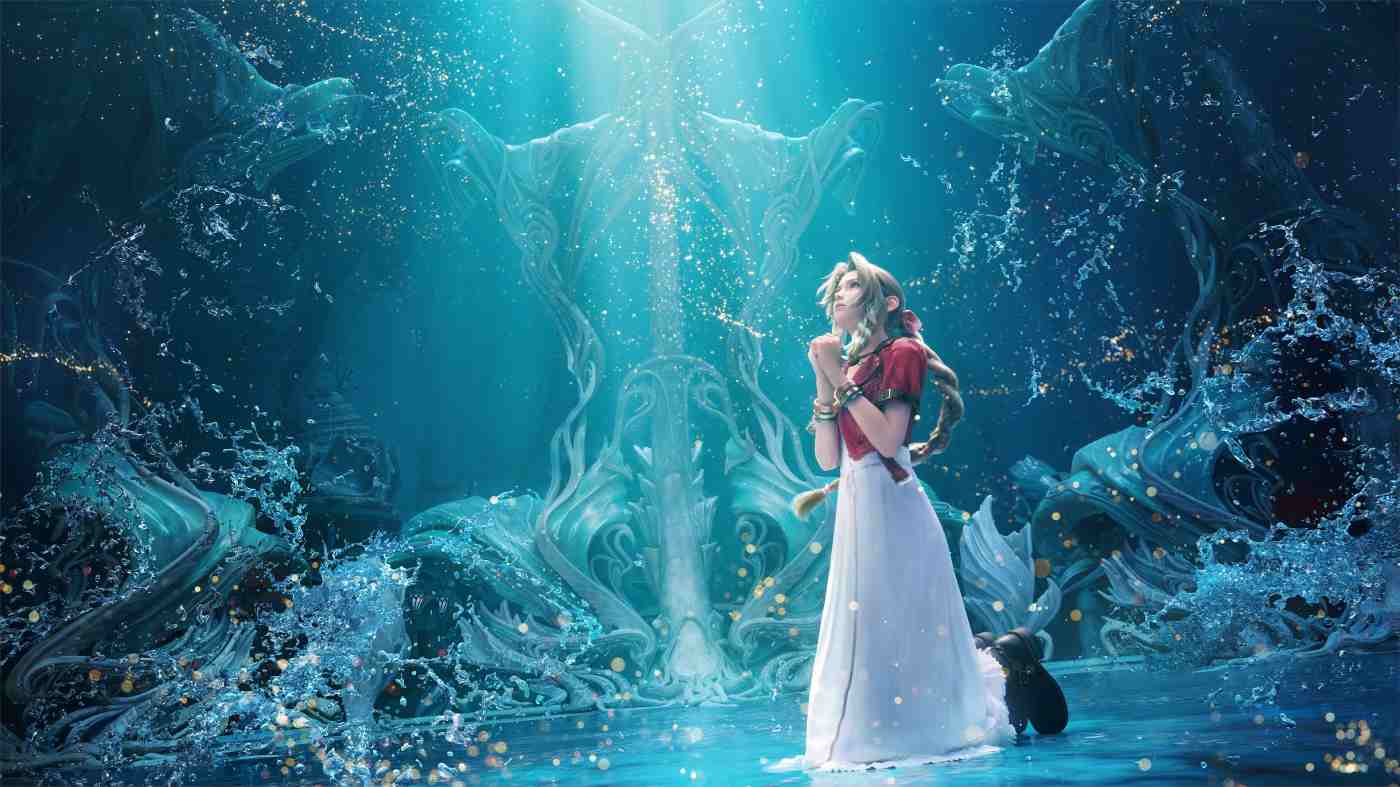While this review contains zero spoilers outside of what’s already been officially revealed in trailers, there are spoilers for Final Fantasy VII Remake, and Crisis Core: Final Fantasy VII.
There’s a lot riding on the middle chapter of any trilogy. Some of the most beloved games of all time are sequels – Halo 2, Gears of War 2, God of War II, the list goes on. You could argue that there’s even more weight on Final Fantasy VII Rebirth, the second part of the ambitious Final Fantasy VII Remake project, not only because of its position as the middle chapter, but also because it pushes the definition of a remake and what the term entails.
The Remake trilogy isn’t just posed as a remaking, it also serves as a pseudo-sequel to the seminal 1997 original. While diverging from source material is always a risky venture for any remake of a beloved piece of media, Final Fantasy VII Rebirth makes the most of the opportunity to great effect, while retaining much of what made the original game, and the first part of the remake so excellent to begin with.
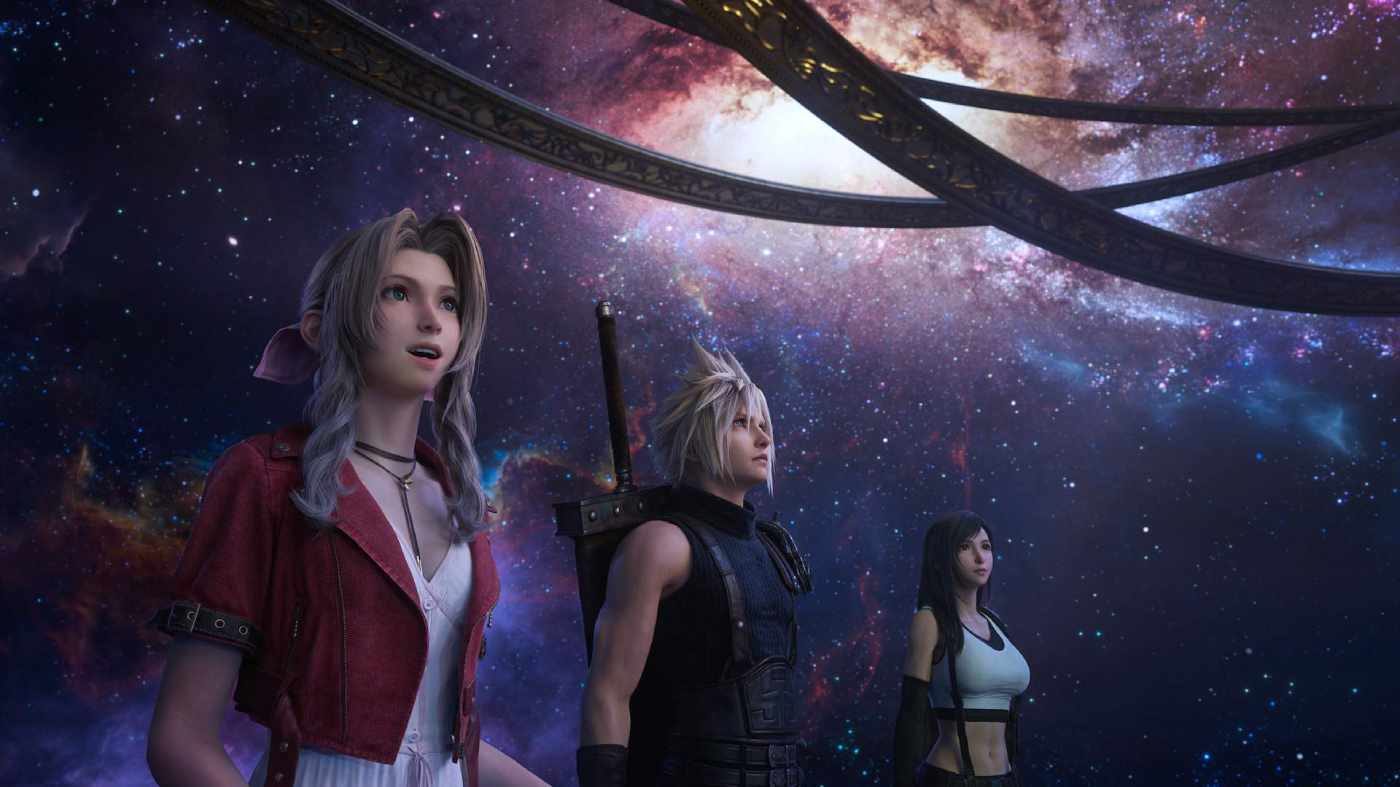
Rebirth wastes no time in kicking its narrative into gear, opening with an enthralling recounting of the eponymous Nibelheim Incident from the perspective of Cloud. While Final Fantasy VII Remake was quite reserved in its use of Sephiroth, Rebirth’s opening hammers home the omnipotent threat that he poses to the planet. It also humanizes Sephiroth and his relationship with Cloud, Tifa and the Shinra company before his inevitable fall.
Shortly after, the party is forced to evacuate the once quaint town of Kalm, as Shinra makes their presence known, kicking off a continent-spanning hunt for Sephiroth before he can enact his plans of world destruction. It’s the kind of journey that evokes the intangible feeling of adventure commonplace in older JRPGs.
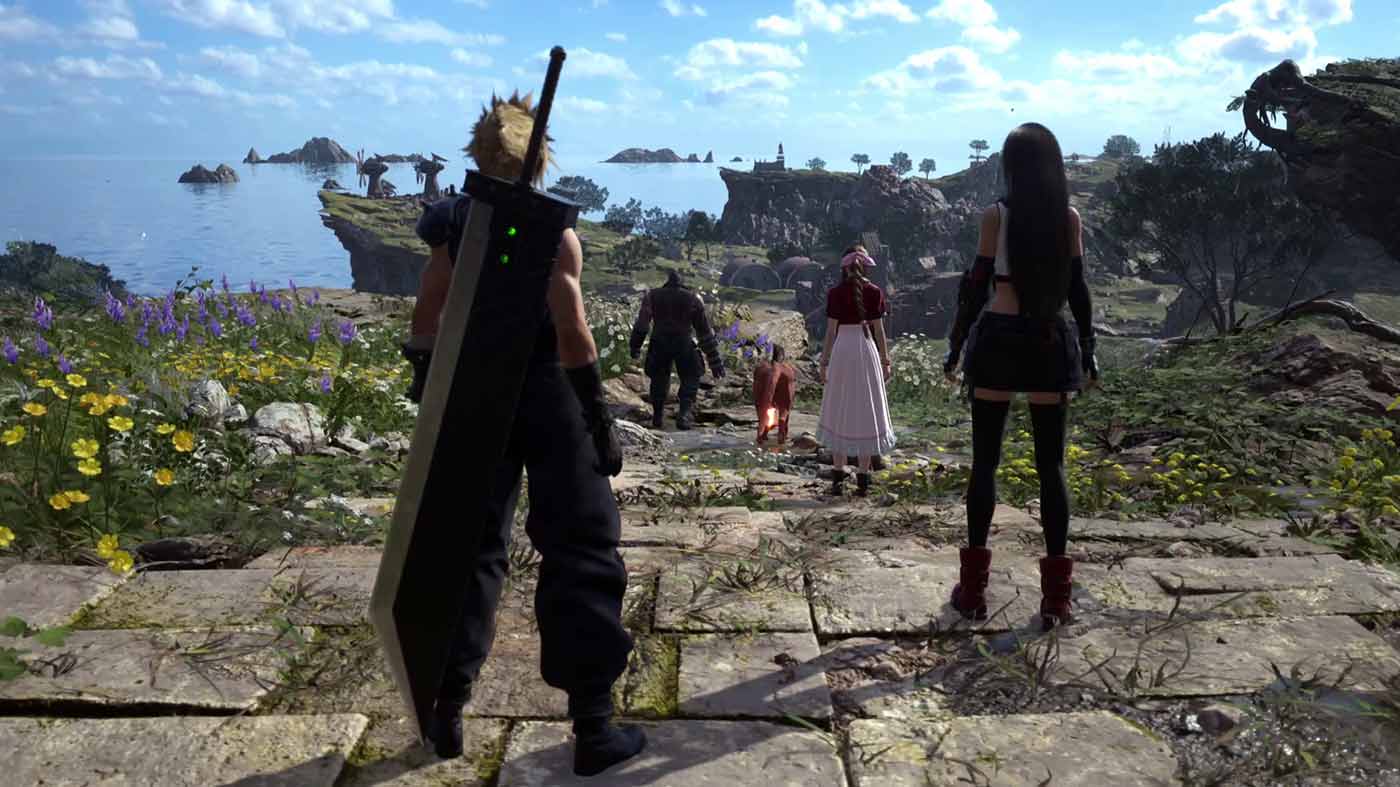
A good chunk of this feeling is rooted in the mysteries that Rebirth presents as part of its exploration of the unknown. The destruction of the Arbiters of Fate at the end of FFVII Remake means that the story here is no longer bound by the constraints of the original. Rebirth constantly toys with your expectations. It wants you, much like Cloud, to question your memories of the original game as it bounces between familiar story beats and the treading of unknown waters.
This is best exemplified by the returning Zack Fair, who seems to have survived his fateful encounter with Shinra at the conclusion of Crisis Core. Without getting into spoiler territory, Zack’s inclusion in Rebirth feels considered and more than just fan service. Each new scene with him is a tantalizing tease into the new possibilities that Rebirth presents, culminating in a satisfying conclusion.
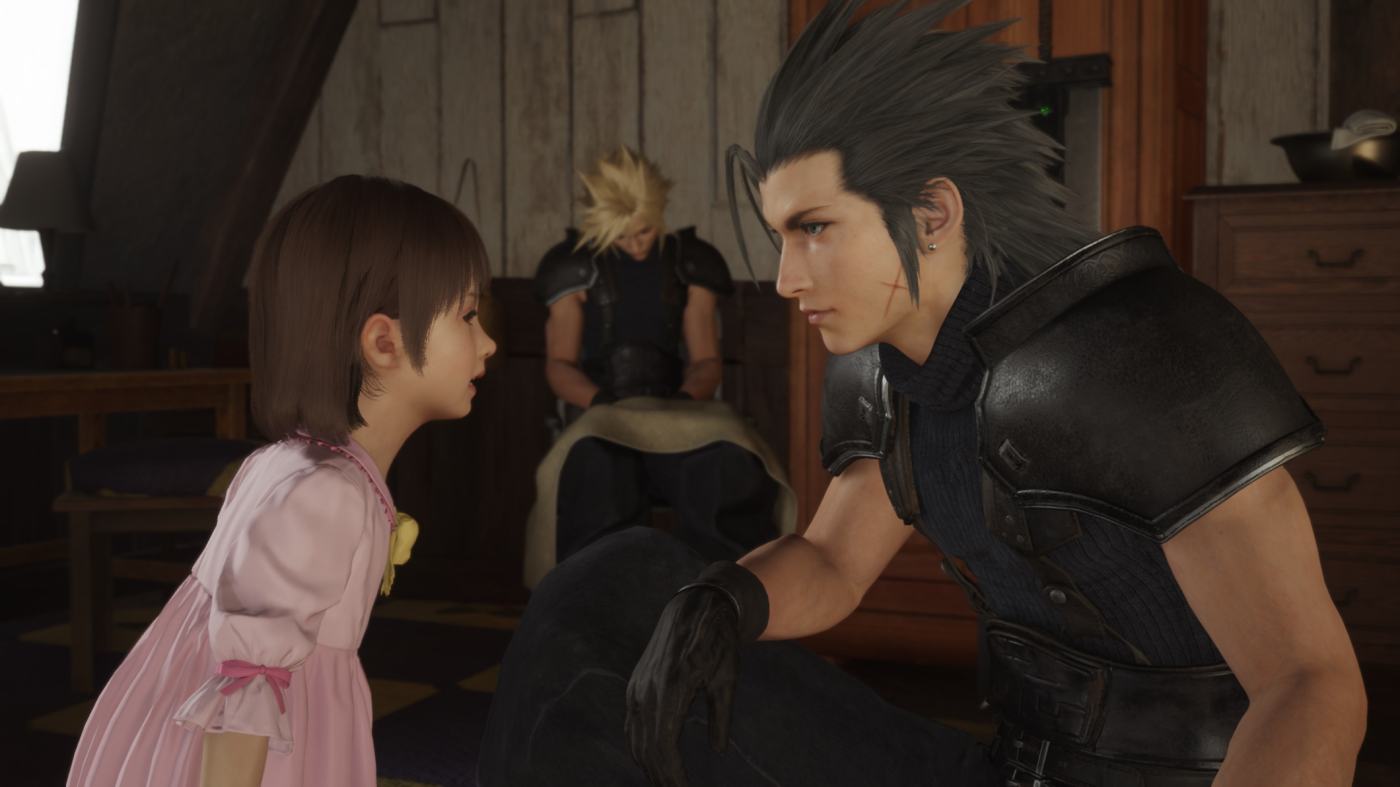
Rebirth is still undoubtedly Final Fantasy VII, but the way in which it deftly balances the combination of elements both new and old offers up a fresh and enticing narrative for long-time fans and newcomers.
MIGHTYAPE HAS THE CHEAPEST COPY AT $89 PLUS POSTAGE
Rebirth’s enormous journey concludes at the Forgotten Capital, and largely follows the structure of the original outside of a few exceptions. Even though there’s a honed focus on the events of Rebirth and what it means for the Remake trilogy, Final Fantasy VII’s timeless cast of characters aren’t left to the wayside. Every controllable party member – and I mean every controllable party member gets some time in the spotlight here.
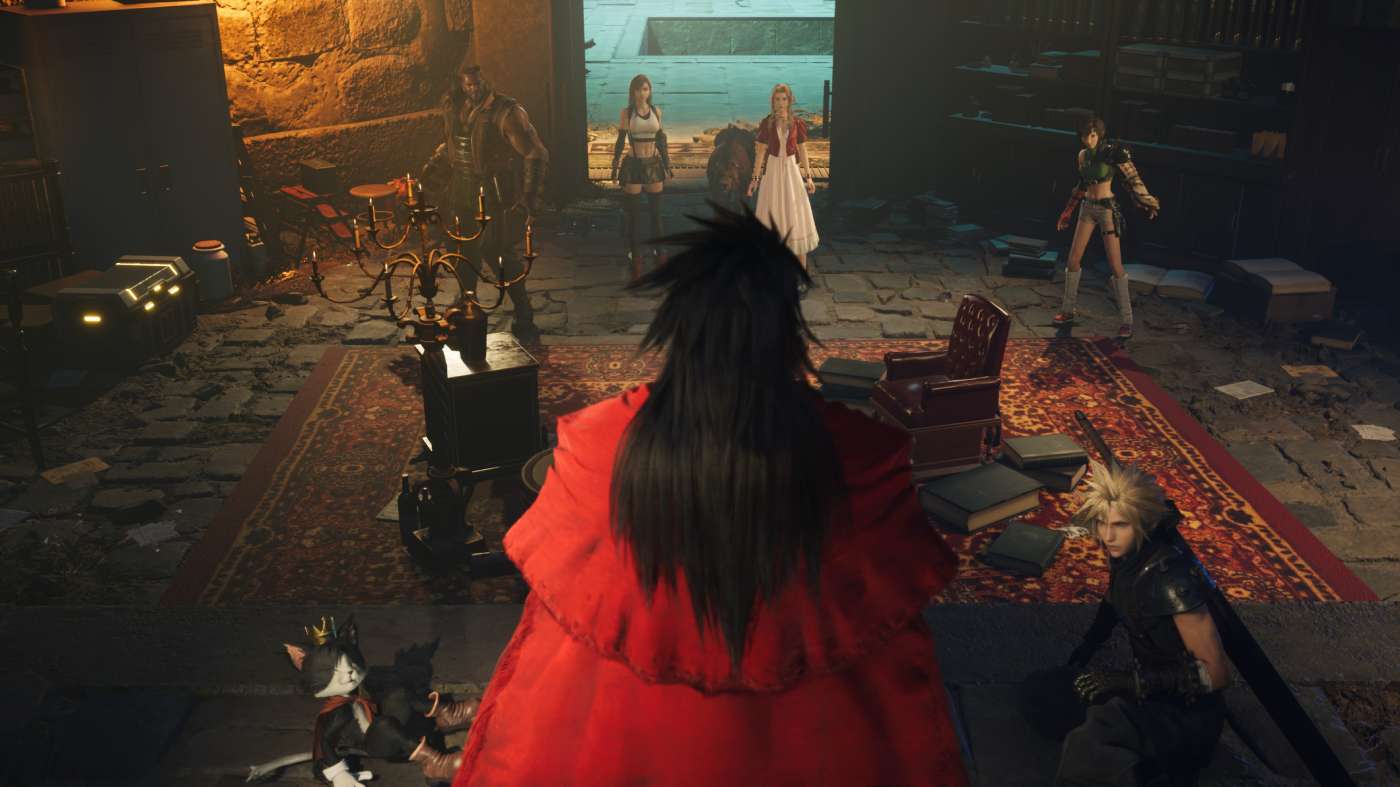
Cloud is still struggling to make sense of his past, and Sephiroth’s hold over him grows stronger by the day. Aerith is trying to understand what it means to be an Ancient, and what exactly her role is in the fight against Sephiroth. Newcomers like Yuffie and Cait Sith also get much more time to shine than in the original, helping them to feel much more integrated into the party overall. Even Vincent and Cid get a healthy dose of characterisation despite not being playable, the former of which is incredibly well realized by Matthew Mercer’s suitably edgy performance.
The highlights of Rebirth’s character work are undoubtedly in Barret and Red XIII. Barret’s return to North Correl is reimagined with poignant results, exploring what makes his character tick and the events that laid the foundations for his hatred for Shinra. Red XIII’s ties to Cosmo Canyon are similarly heart-wrenching, as he undergoes an expanded, more introspective exploration of his family ties and the role he wishes to take on as a protector of his people.
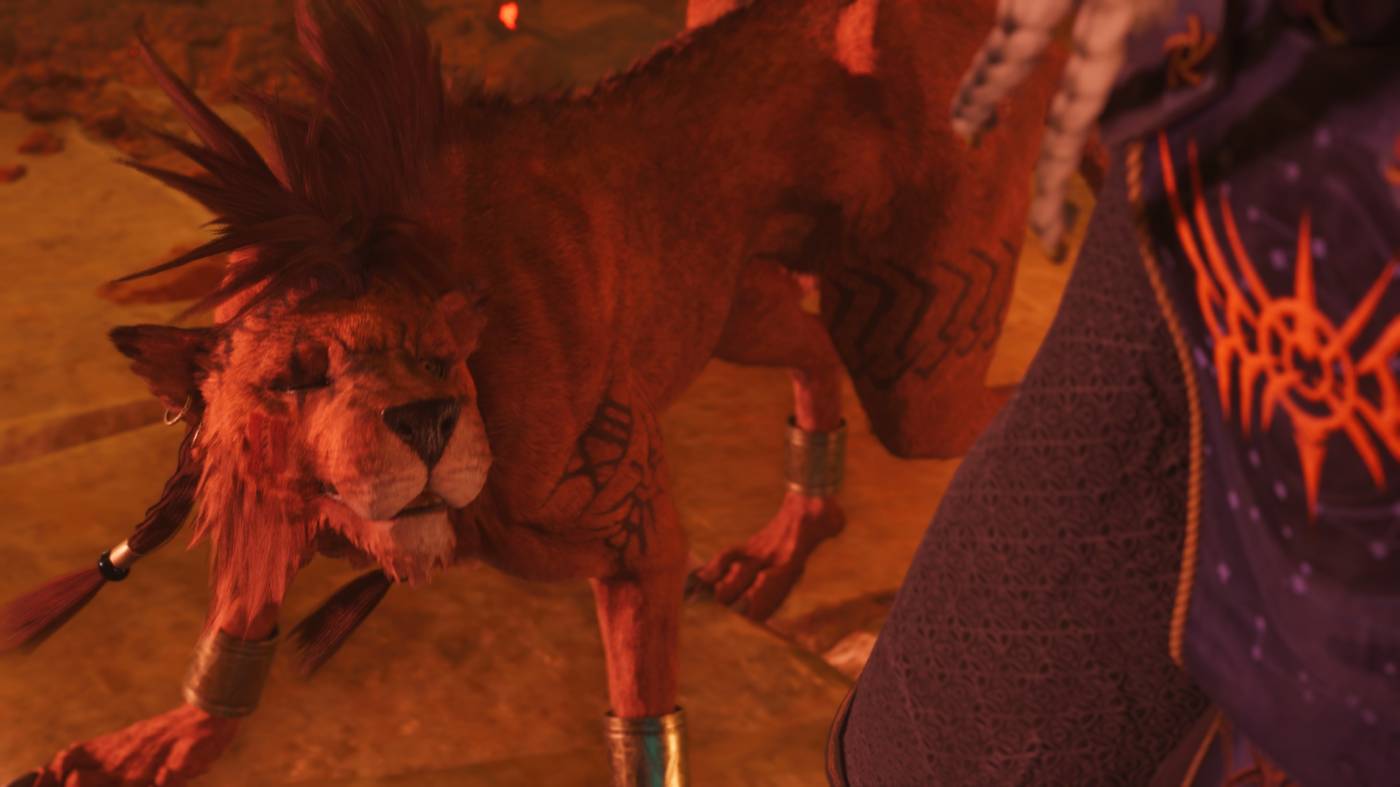
And then of course, there’s Sephiroth, perhaps the most iconic video game villain of all time. Sephiroth takes centre stage in Rebirth, brought to life in scene-stealing fashion by Tyler Hoechlin’s excellent performance. Sephiroth feels like a real threat in Rebirth – always one step ahead, always aware and ready for what’s next, as he strings the party along like an elusive puppet master.
While Remake’s Midgar adopted a linear design with scattered open areas throughout its chapters, Rebirth blows the door off the hinges to a much more non-linear design approach. It feels decidedly fitting as the party breaks free of the claustrophobic industrialism of Midgar and Shinra’s machinations.
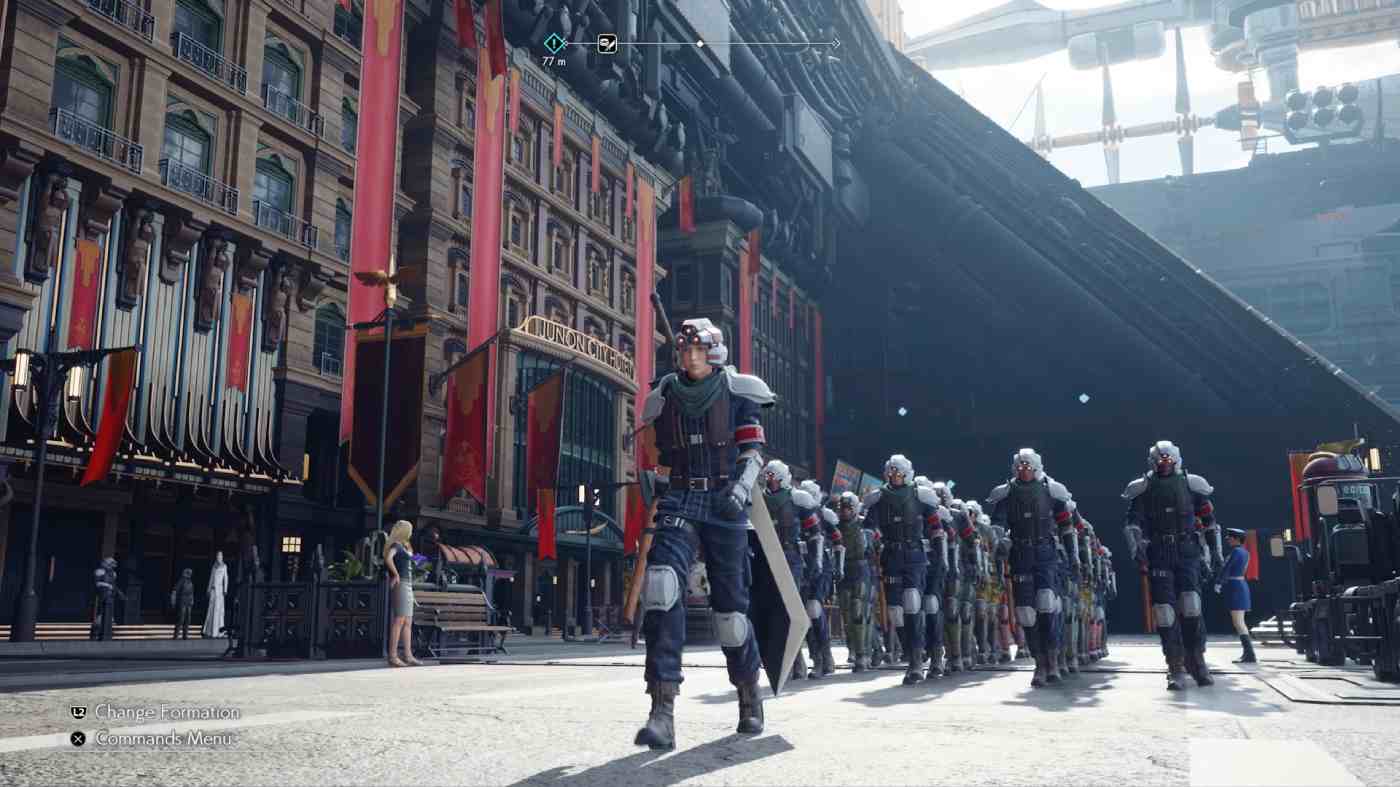
Rebirth regularly fluctuates between open-area exploration and more linear sections as you move between the larger regions and go through certain story beats. The linear parts often have forced party compositions, and will let you take control of each unique character at some point in the story. This also means you get to use their exclusive exploration mechanics, like Red XIII’s abilities to climb certain walls or being able to make use of Yuffie’s expanded traversal kit thanks to a grappling hook. Bouncing between these open and closed environments does wonders for the pacing across the 50-plus hour main story beats.
When you aren’t moving through these linear locales, you’ll be exploring Rebirth’s numerous regions. There’s six in total, each offering up distinct topography, colour palettes, and regional flora and fauna to explore and interact with. While they feel less compromised by Shinra’s Mako-draining practices, the planet is still irreparably scarred in many ways.
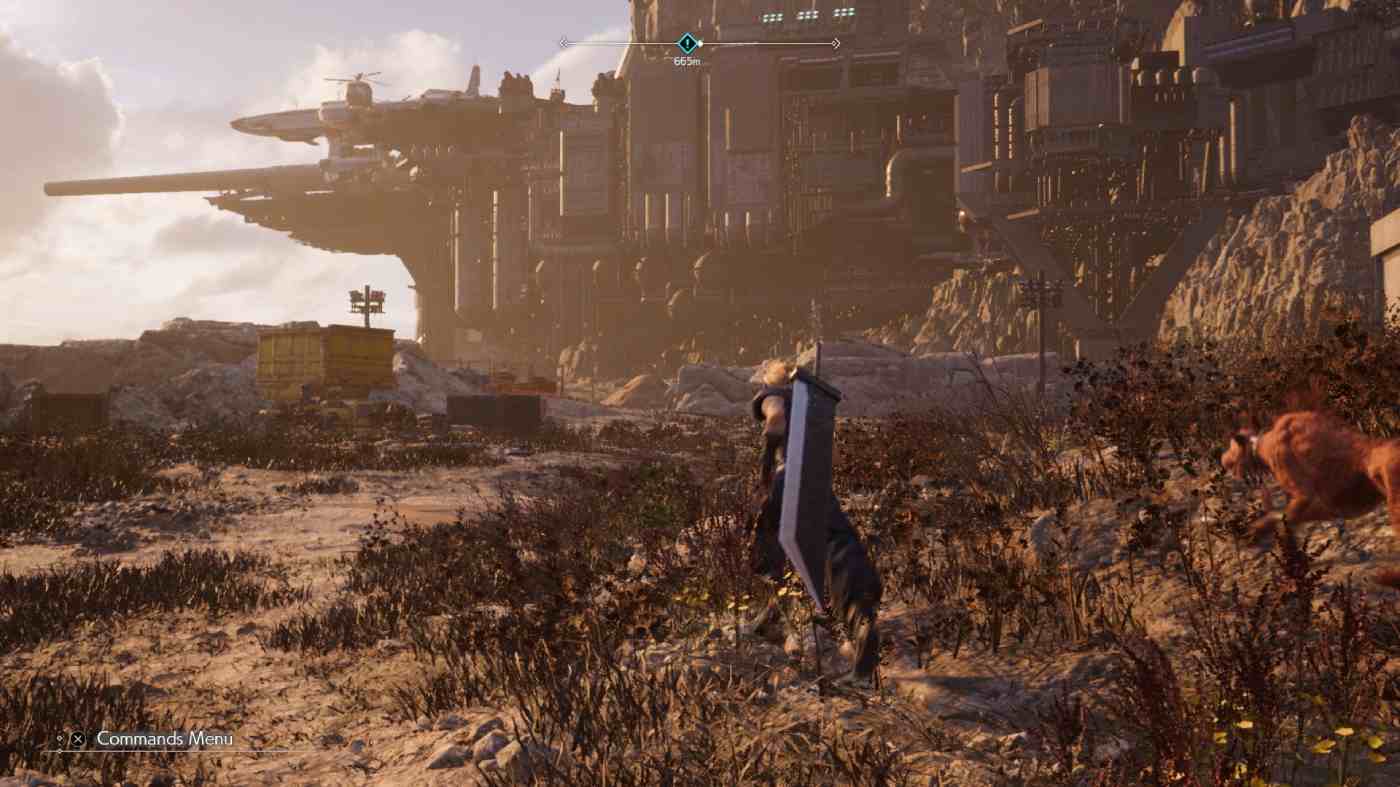
Costa Del Sol’s neighbouring tropical environments deeply contrast with the other parts of the Corel region. The Gold Saucer, for example, has left the lands surrounding it devoid of the same lush greenery, which is no doubt due to the sheer amount of Mako it would take to power such a large entertainment complex. The verdant outskirts of the Junon region slowly transition into land peppered with craters left behind after the war with Wutai, all of which are overshadowed by Upper Junon’s monolithic Mako Cannon.
The thoughtful design of these regions is more than skin deep. A lot of Rebirth’s open world activities share intrinsic ties to FFVII’s broader themes of life and environmental conservation. Each region is utterly packed with this stuff, and all of it is done in service of Chadley surveying the lands outside of Midgar. Completing these earns you World Intel which can be used to develop powerful Materia with Chadley you aren’t able to get elsewhere.
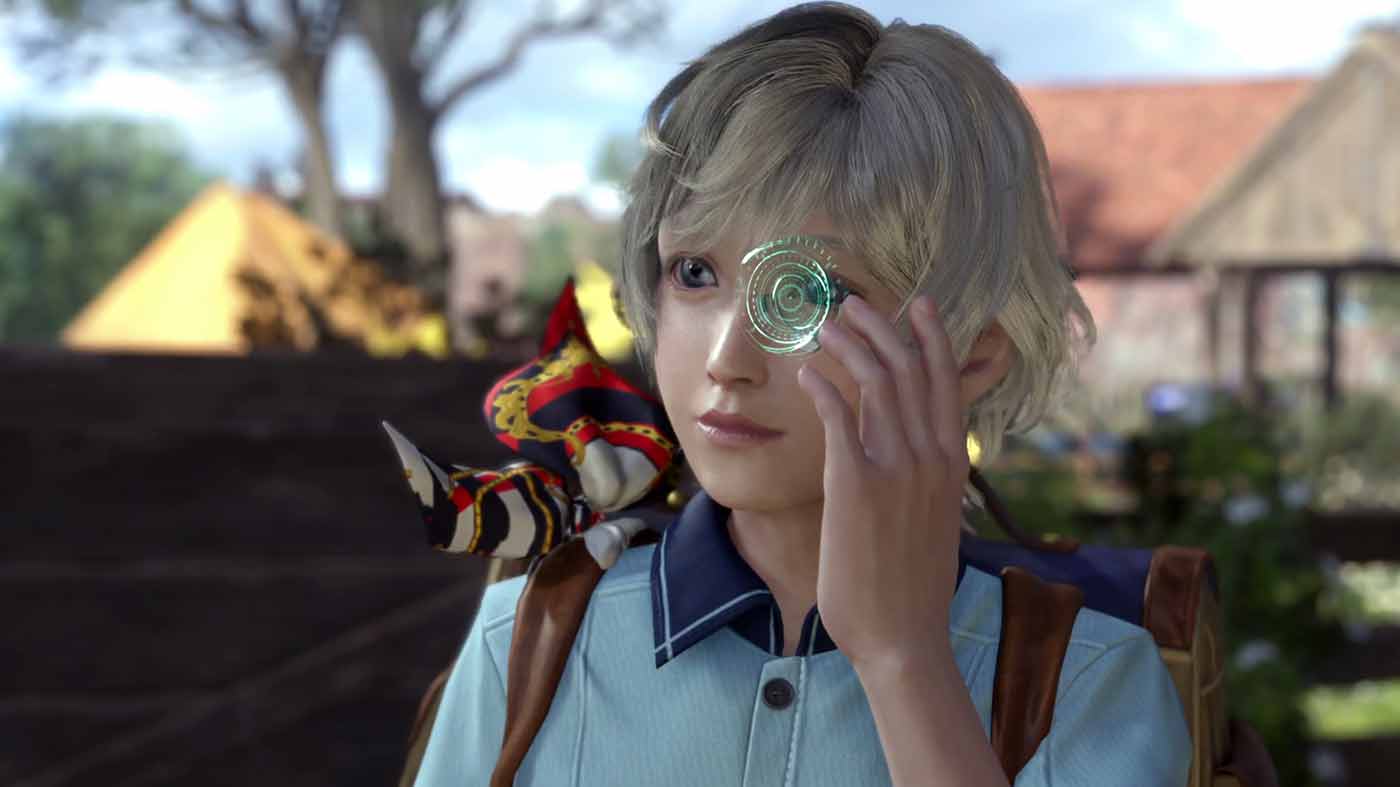
These open world elements do feel tired and fairly dated by today’s standard, though. Ubisoft-style towers reveal points of interest when activated, from combat assignments and Chocobo excavation sites, to Lifesprings and Sanctuaries dedicated to the summons like Titan and Alexander. They’re all bite-sized in nature but ultimately boil down to either a quick-time event or a short skirmish with wildlife that have some bonus conditions for full completion. There’s also a lot of them, and you’ll no doubt be over the checklist style nature of it all if you’re after 100% completion.
The categoric highlights of these are the Life Springs and Protorelic activities. The former not only provides respite from Shinra’s corruption of the land, but also expands the backgrounds and origins of their regions by providing world history for each. Protorelics, on the other hand, are the absolute cream of the crop.
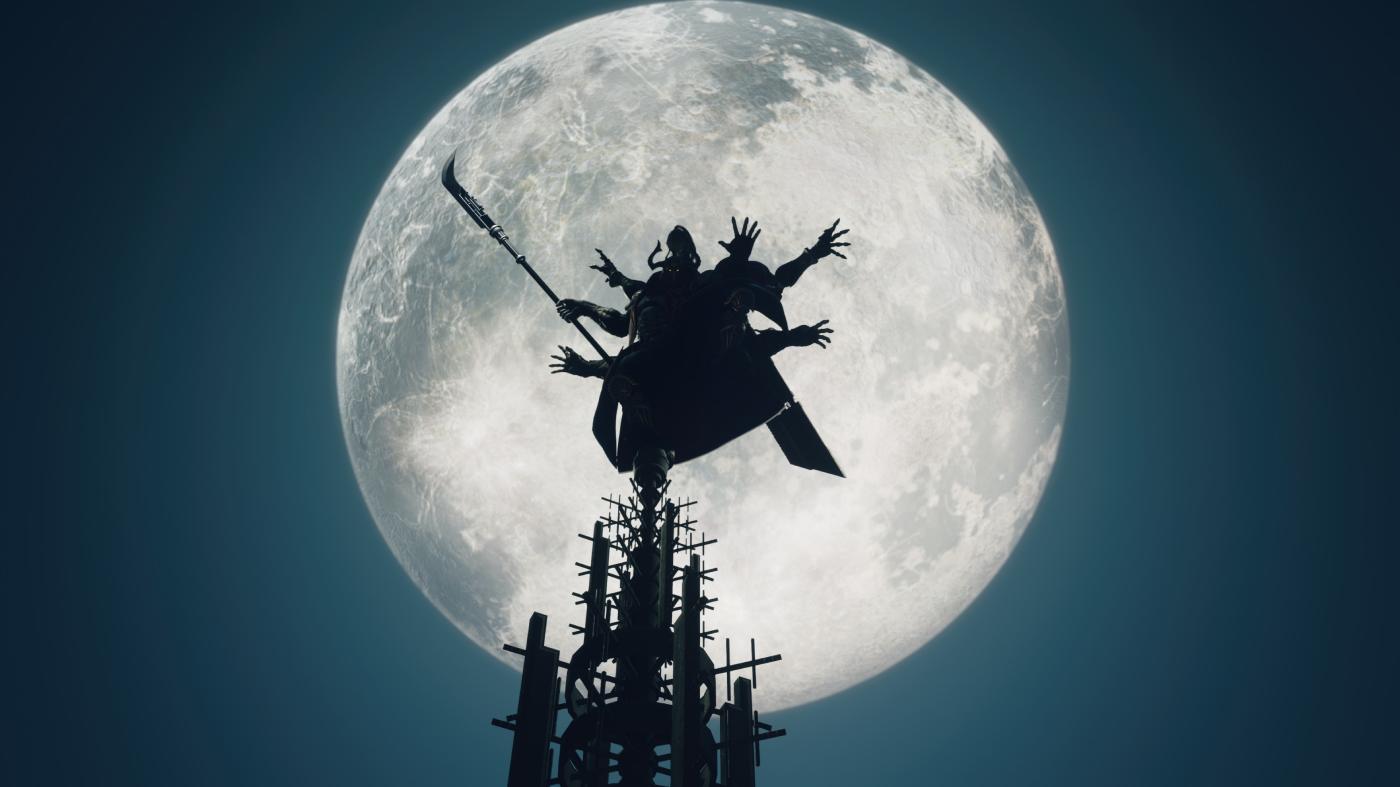
Each region has its own Protorelic to obtain, each with an activity chain unique to that area. It’d be a shame to talk about any of them here, but all of them are wildly distinct in narrative and gameplay in fun and dynamic ways. They also tie together into a broader side story that’s thoroughly entertaining to unravel, and results in an incredible climax.
As you explore the open world, you’ll also collect materials to be used in item transmutation. This system effectively allows you to create consumables, armour, and accessories on the go. It’s a great inclusion that prevents the need to visit a shop every time you want to stock up, though it is easy enough to do that as fast travel is quick and accessible all over the map, especially if you repair the numerous Chocobo stops in each region.
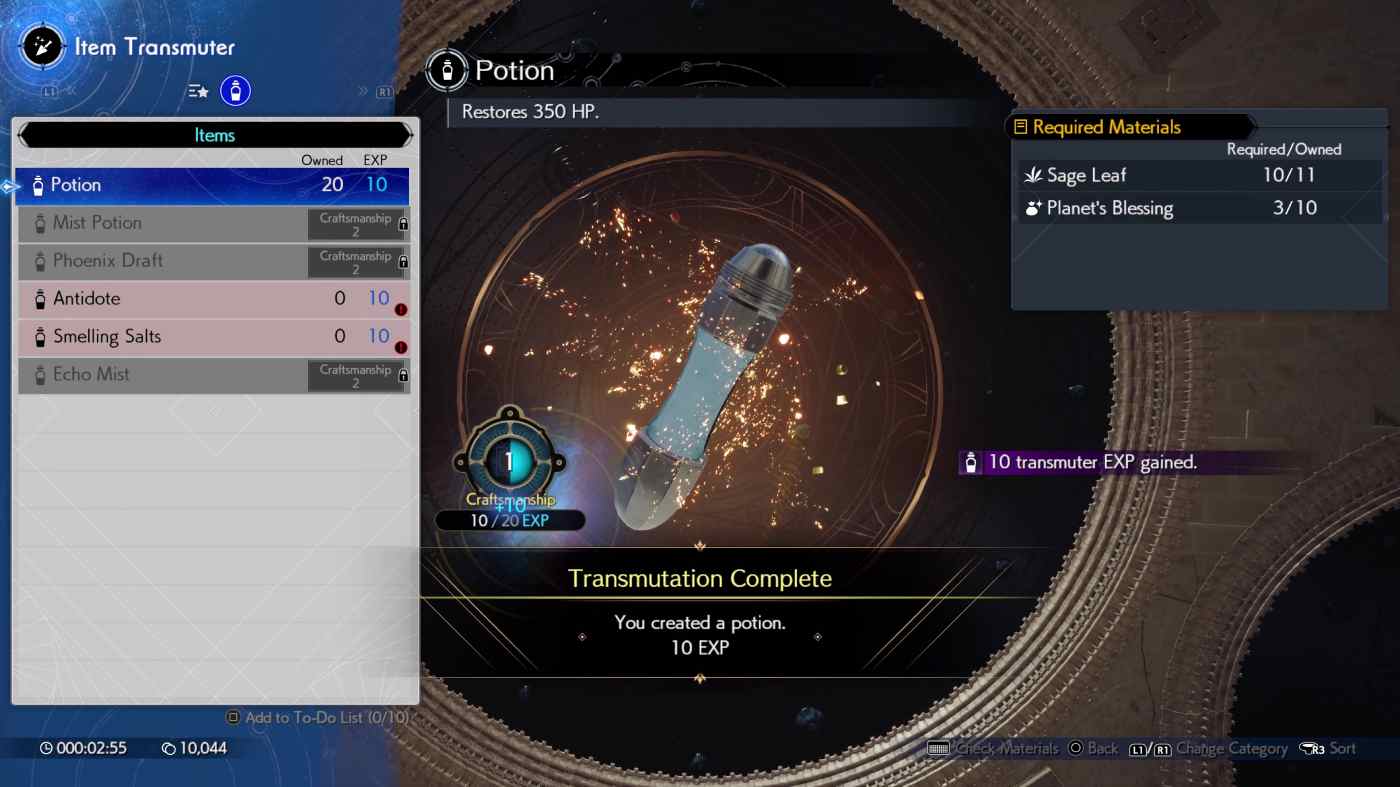
Speaking of which, every region also has its own Chocobo for you to tame and use as a mount to get around. Where the Grasslands has the most standard of these avian franchise staples, the Chocobos found in Cosmo Canyon can glide through the air to access higher points on the map. It allows for more creative and vertically inclined level design that keeps each region feeling layered and more considered from an exploration perspective.
There’re also Odd Jobs, which serve as Rebirth’s side quests. The quality of these is vastly improved over Remake for the most part, exploring the plights of these side characters and how they relate to the party. Even the ones that don’t have as much emotional depth, often have comedic elements that make them well worth experiencing. A large majority of them also provide more characterisation for an associated party member, which in turn builds up your bond with that character.
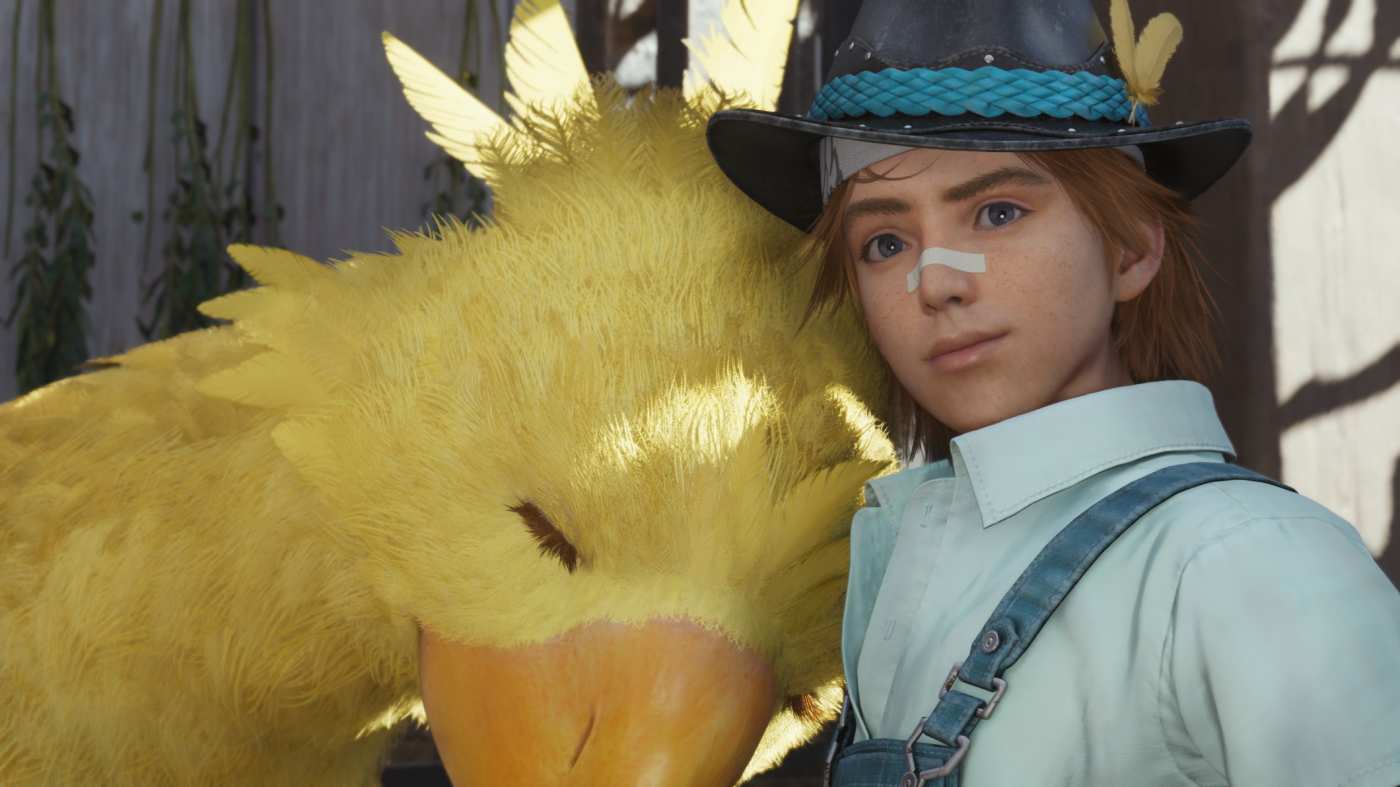
Party Bonds further play into the idea of having a larger cast of characters in Rebirth. Through conversation, Odd Jobs, and using Synergy Skills and Abilities, you can deepen Cloud’s relationship with all playable party members bar Cait Sith. It’s nice to see how these characters bounce off of each other as they develop, and it culminates in Cloud being able to share a date with a special someone at the Gold Saucer.
If you’ve played the Intermission expansion for Remake, Rebirth’s combat will feel instantly familiar. It uses the same core structure of executing real-time combos to rack up ATB so you can unleash abilities and spells to build up stagger. Once staggered, the damage bonus you get implores you to go to town on your foes to deal out as much carnage as possible. It’s through strategic use of your ATB, Limit Breaks, and Summons that you’ll prevail Rebirth’s most challenging battles.
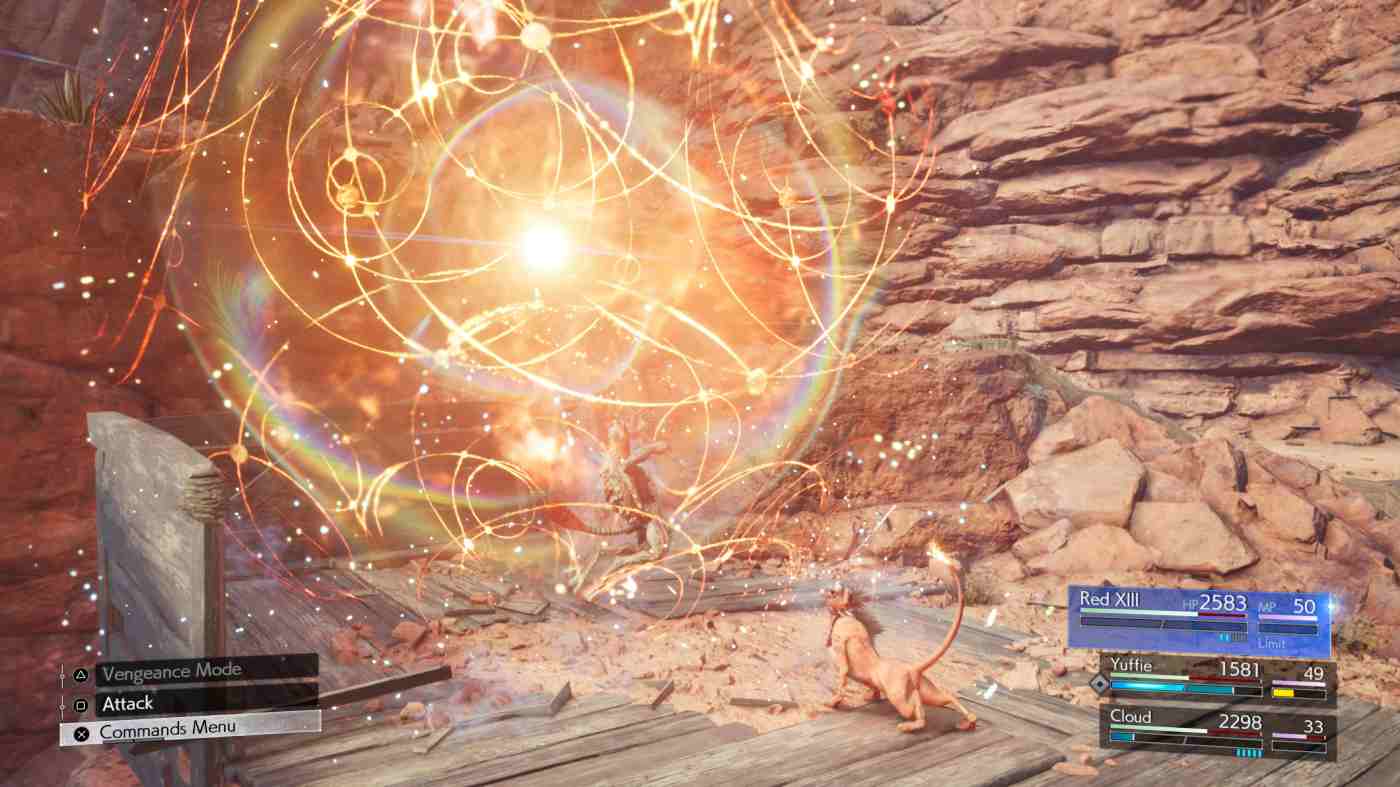
The inclusion of Red XIII and Cait Sith as playable party members also freshens up combat and team compositions. Red is based around blocking and counterstrikes to build up his Vengeance Mode gauge, bolstering his attacks and giving him lifesteal properties. Cait Sith is perhaps the most unique character yet, where the name of the game is summoning his Moogle to use more powerful abilities. You can jump on and off the Moogle at will, use it to tank hits, roll dice for random effects, and much more.
New party members aside, the only truly new inclusion is Synergy Skills. These are a widely varied assortment defensive and offensive skills that see two characters working together. Cloud is able to deflect Barret’s bullets off of his sword, and Aerith can use magic to help Tifa pop an enemy up for an aerial combo. Every character has Synergy Skills with everyone, so it keeps things feeling fresh and dynamic no matter who you choose to put into your active three-person party.
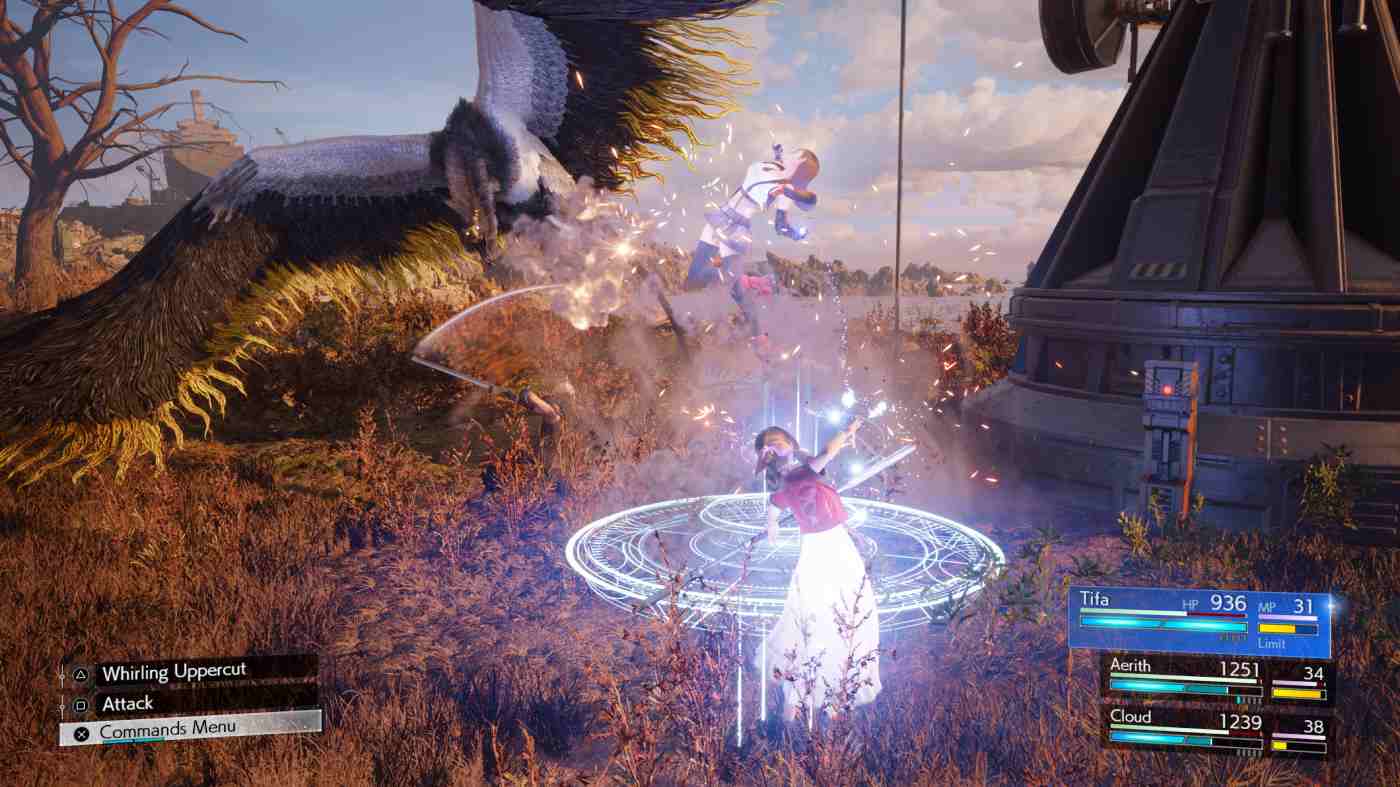
These go hand-in-hand with the flashy Synergy Abilities which return from Intermission. These abilities can be performed once you store enough ATB charges between characters, allowing you to unleash powerful attacks with bonus effects like extended stagger windows or a temporary window for MP-free spell casting. They add an extra layer of depth onto an already excellent combat system, and the sheer number of them per character combination offers a lot of flexibility in strategy. All of these combat mechanics come together in Rebirth’s boss fights, which highlight the true depths and strengths of this combat framework.
Progression has seen a large degree of restructuring, especially on the character side which is now primarily handled by the Folio system. Each playable party member has their own Folio which works similar to Final Fantasy X’s Sphere Grid, though, on a much smaller scale and level of complexity. As you earn SP through numerous avenues, you can spend points to unlock nodes that net you passive bonuses, new abilities, Synergy Skills, Synergy Abilities, and much more.
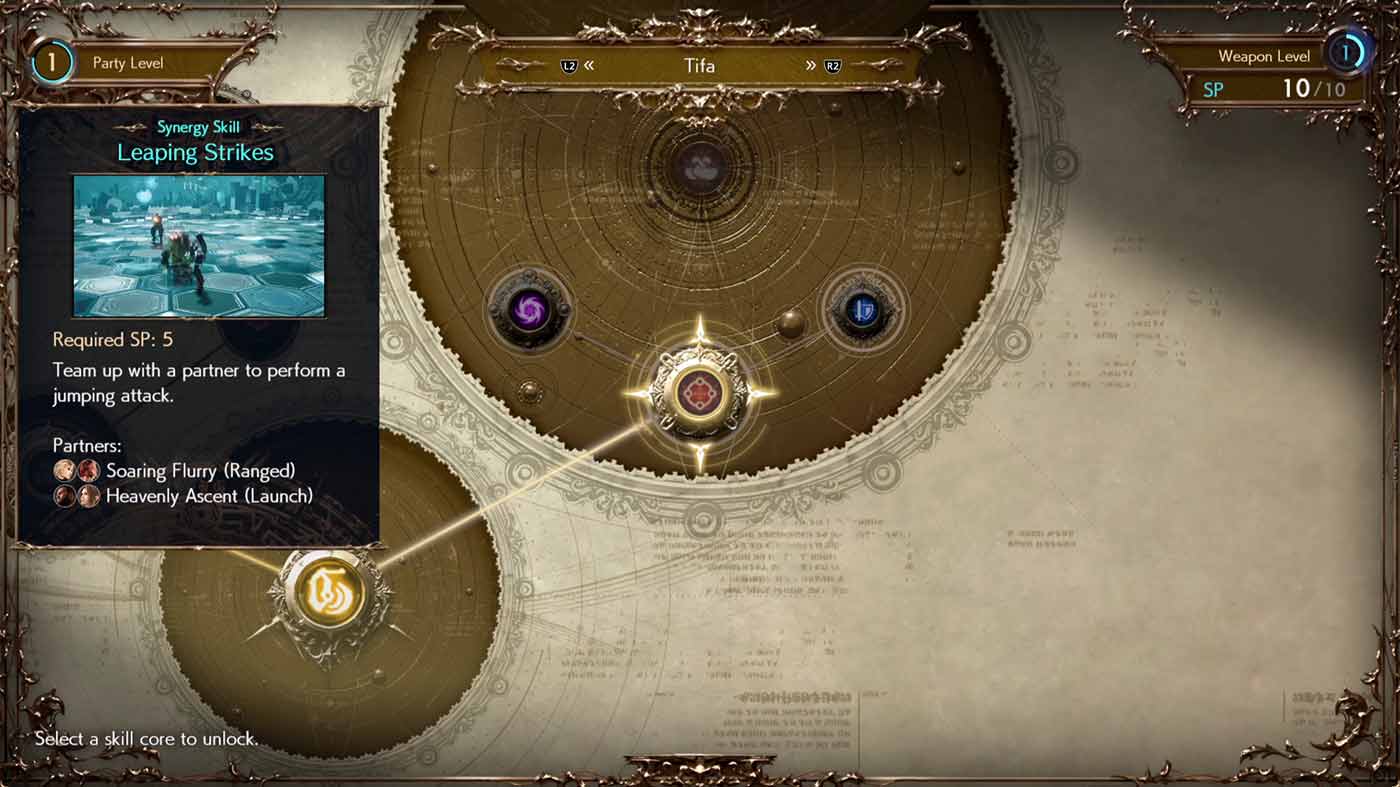
New abilities in the Folios are unlocked as you increase your Party Level, which comes through general story progression and by completing Odd Jobs. There are a number of directions to take characters in with Folios, and they’re quite expansive in total size, extending well into Rebirth’s Hard Mode. You can also reset them at any time if you want to experiment with other branches or try out a new party composition.
The Materia and gear system is a prime example of if it ain’t broke, don’t fix it. Gear and weapons each have slots for Materia that levels up as you gain AP in combat, further enhancing the capabilities of that Materia. Weapons again bring unique abilities that can be mastered, further expanding the ability set of each character. It’s been further built up with new types of Materia and new weapon abilities that afford you even more customization and flexibility in how you approach combat.
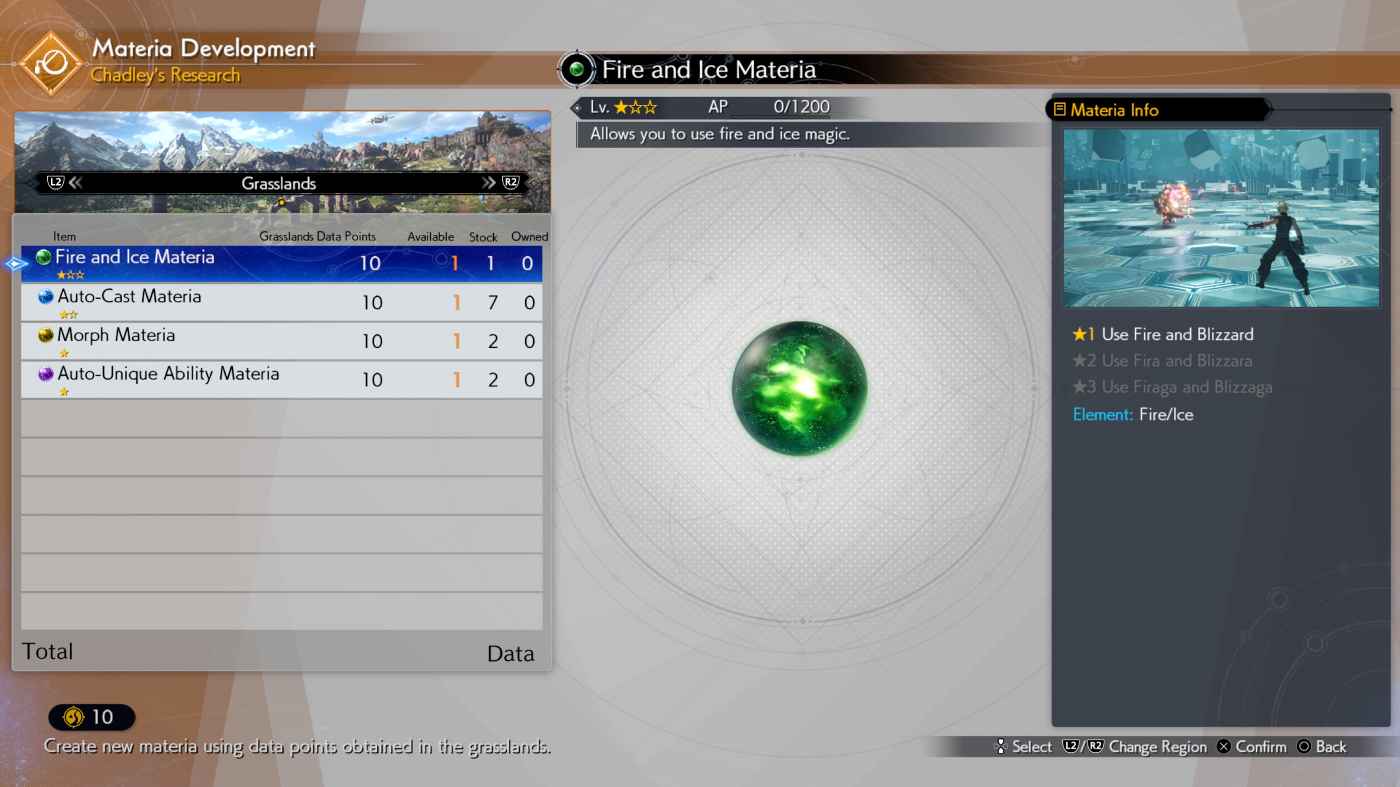
It goes without saying that it simply wouldn’t be a Final Fantasy without some minigames, and Rebirth has minigames in droves. From the Rocket League-like Run Wild and the quick-fire shooting gallery of Pirate’s Rampage, to rounding up Moogles and luring them back to their Mogstools. Rebirth is densely packed with countless distractions that almost always feel worthwhile.
None of these come close to what you can do at the Gold Saucer, which is home to 3D Brawler, Chocobo Racing, G-Bike, Galactic Saviors, its own battle colosseum, and more. It’s absurd how much of this stuff Rebirth has in totality, a bulk of which come with hard modes for additional rewards and added replay value. Some of these feel like games of their own, like Chocobo racing which encompasses many tracks, and even has some light customisation in fitting out your Chocobo with gear for bonuses. Standing tall above them all though, is the brand-new card game, Queen’s Blood.
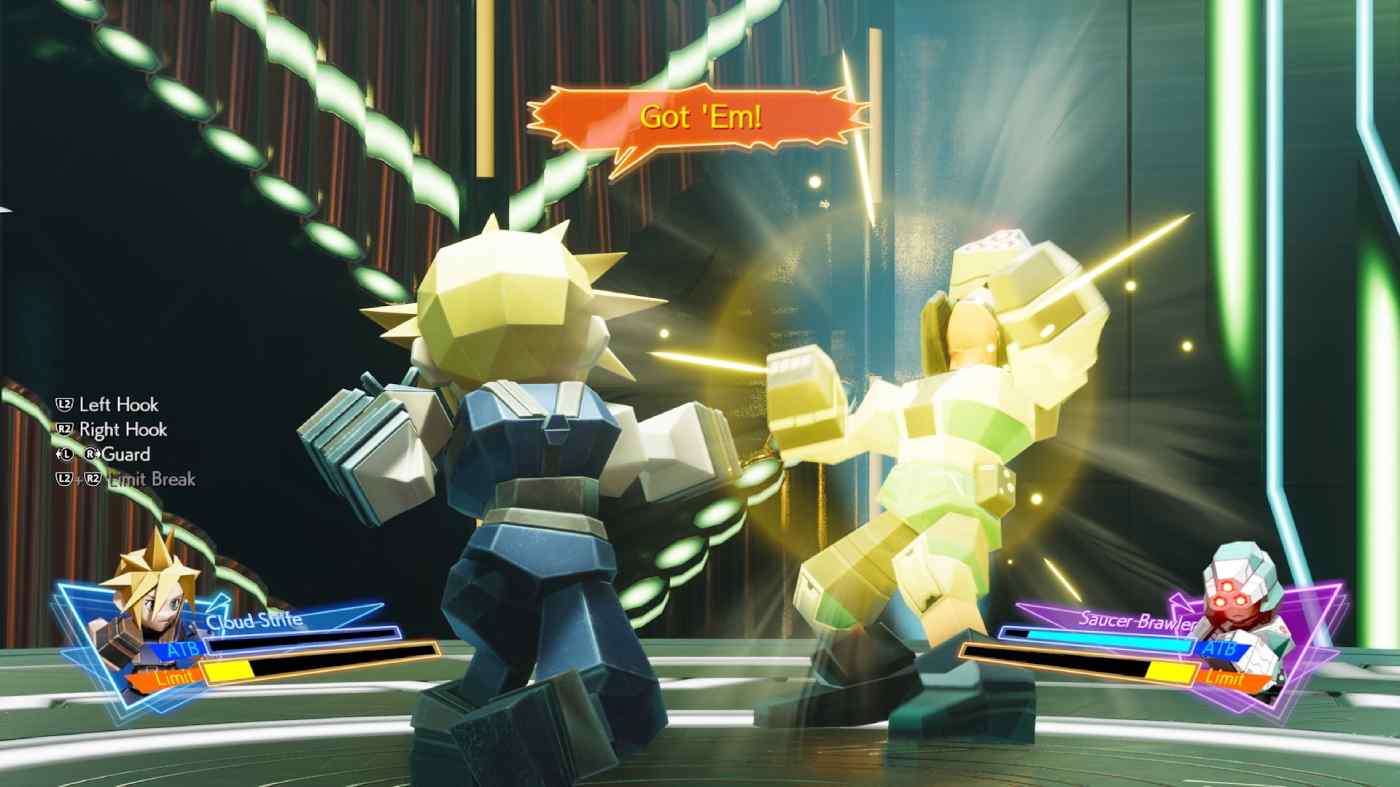
Kieron was right to worry about Queen’s Blood. It calls back to Triple Triad and Tetra Master from the Final Fantasy titles of old, but offers up an experience all its own. The general gist is that you play cards to gain points in three lanes, the victor being the player with the most points from winning lanes once all positions are exhausted. It gets much more complex than this, with countless card effects introduced as you play, numerous build types, and powerful legendary cards to collect and structure a deck around. It’s easy to learn but hard to master.
Each region is dotted with Queen’s Blood players waiting for a challenge, each one moving you closer to the next Queen’s Blood rank. You’ll always get a new card for beating them, and card shops around the world sell preset boosters, expanding your own deck building potential as you move through the game. Better yet, Queen’s Blood tells its own excellent side story that hooks you in with its mystery and allure, culminating in an immensely satisfying conclusion. There’s also tricky challenges to undertake at the Gold Saucer and in Costa Del Sol that require outside of the box thinking, and always feel rewarding to solve. It’s brilliantly moreish and I sincerely hope to see it return in some form.
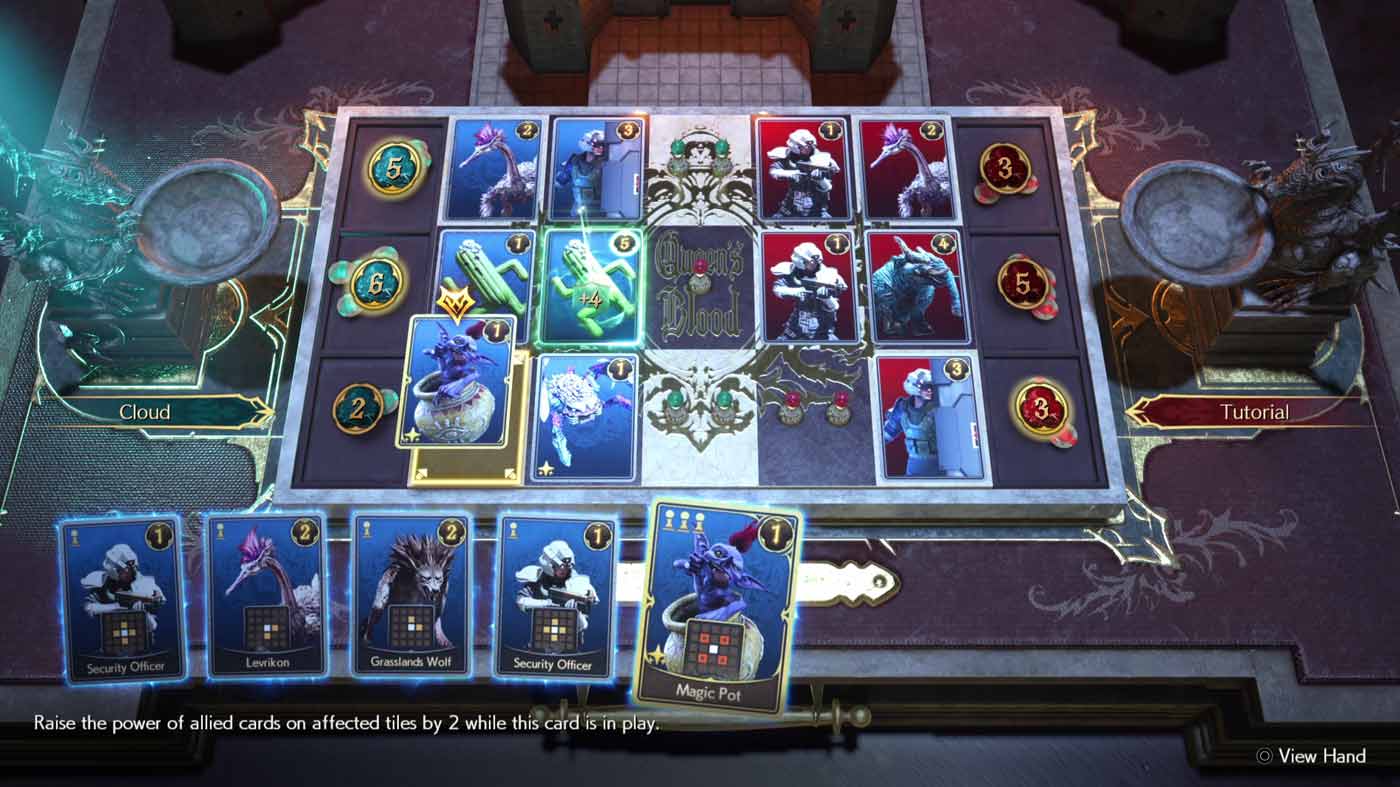
Misuto Suzuki and Masashi Hamauzu’s score is also immense in the way it encompasses countless genres, motifs, and emotions. Remixes of classic themes evoke a combination of nostalgia and newness, while some of the more experimental tracks push the franchise forward with more electronic tunes that feel infectiously energetic. The battle theme never fails to pull you into the action as it swells up, and the story’s biggest moments are always underpinned by tracks that fit each moment just right.
Nobuo Uematsu’s composition of Rebirth’s main them, No Promises to Keep, is another masterpiece from one of gaming’s greatest composers, and Rebirth’s take on the Final Fantasy VII main theme, Departure, feels incredibly fitting for the journey Rebirth entails. I’m sure it comes as a surprise to no one, but it’s another unabashed win in terms of Final Fantasy soundtracks.
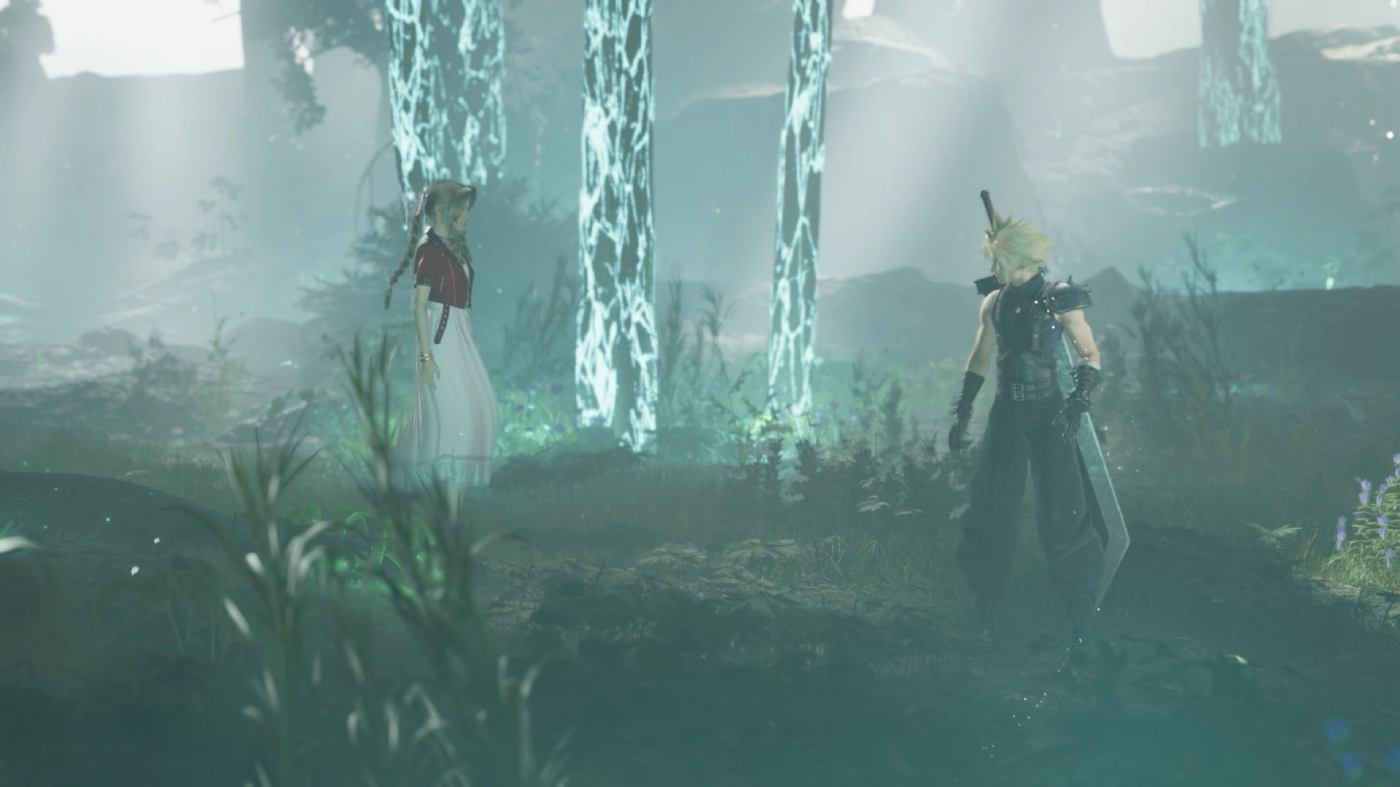
Rebirth is launching with two graphics modes; Performance, and Graphics. Performance offers a smooth 60 frames per second at a lower resolution, while Graphics presents 30 frames per second at true 4K. While differences in modes like these are usually somewhat minor, Rebirth’s Performance mode is a pretty notable downgrade from the Graphics option even with the recent Day 1 patch. Both modes do suffer from the same issue that Remake did where low quality textures plague a lot of the general environments, and end up standing out like a sore thumb when placed against the hyper-detailed character models.
The Graphics mode fares much better if you’re fine with the trade-off in frames per second, but it can feel detrimental to the more difficult combat encounters towards the end of the game, or in Hard Mode. Despite this, Rebirth looks great in certain areas in both modes. A lot of regions have areas with sweeping views of the surrounding environment with extensive draw distances that are impressive to behold.
Much like in Remake, it’s surreal to see these environments recreated with such scale and attention to detail. They feel lively in a way that Midgar doesn’t, which contributes to a less oppressive and a more freeing atmosphere. Whether it’s the sprawling mountain ranges of Nibelheim or the vast depths of Cosmo Canyon, each region is elegantly brought into Rebirth with the utmost care. While I didn’t experience any in-game bugs, I did have three hard crashes across 100 or so hours of play, which never really got in the way thanks to autosave.
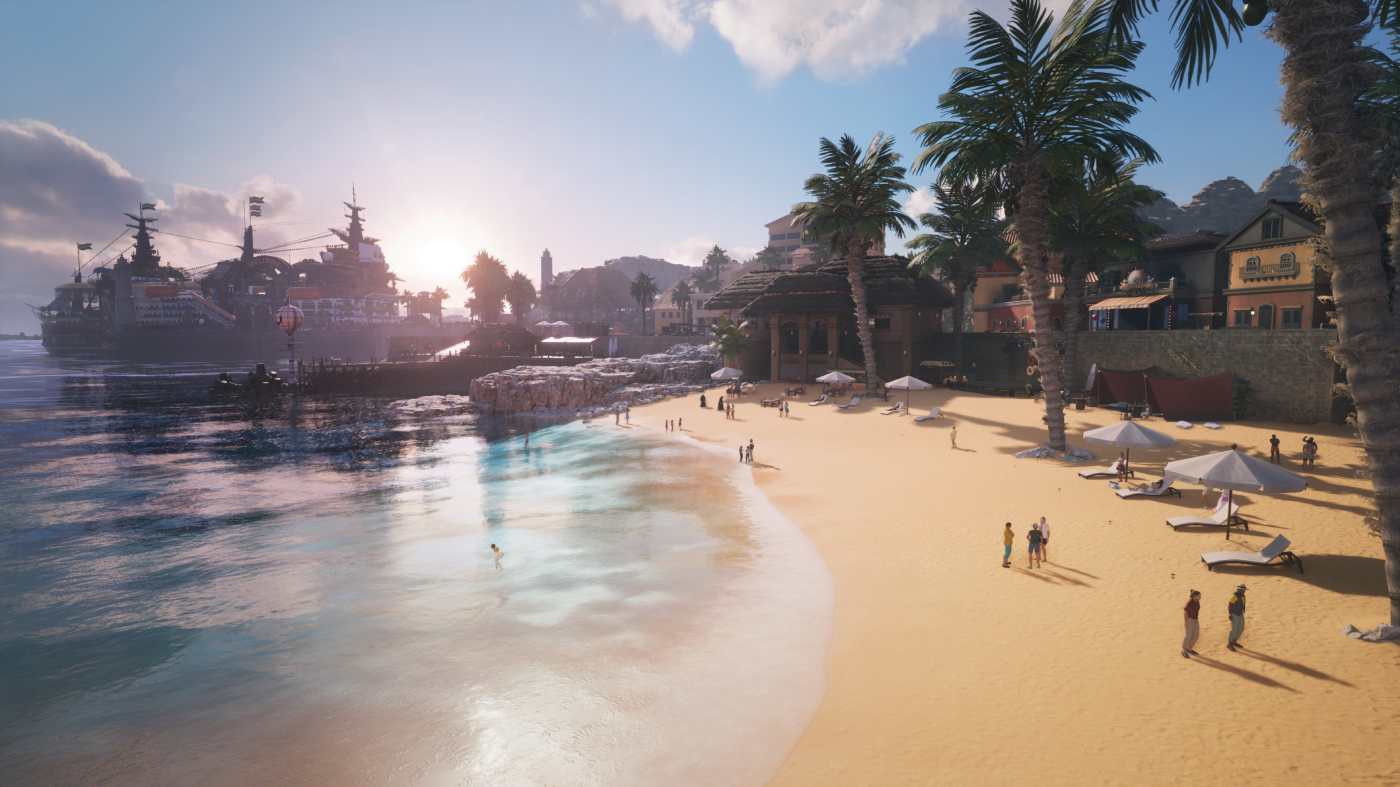
It’s no small feat to follow up the excellence of Final Fantasy VII Remake, let alone the importance of delivering a successful middle part of a trilogy. Rebirth manages this, and then some, creating an experience that feels all its own in comparison to Remake. In some ways, it’s a totally different game, owing to its new approach to world design and the significance of the portion of Final Fantasy VII it’s adapting. A truly worthy sequel and second part to what is shaping up to be an incredible trilogy of games.
